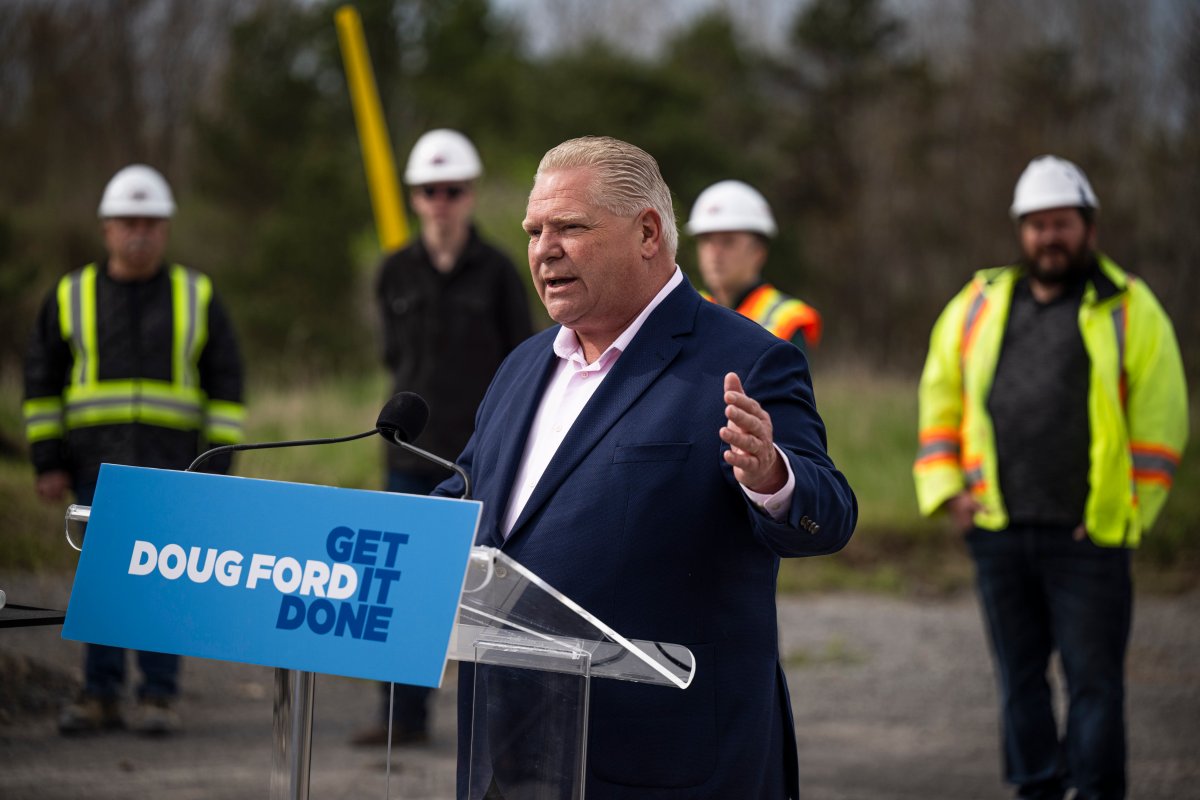The Ford government is closing in on making the case for its signature Highway 413 project — frozen for more than two years — as it prepares to send Ottawa new justifications for the route.

Government documents obtained by Global News suggest the province is aiming to submit new evidence by late 2023 as a battle between the Ford and Trudeau governments over the project’s future continues.
The two governments have been locked in a fight over Highway 413, which will pass through parts of the Greenbelt, for more than two years.
In 2021, the federal government flexed its regulatory muscles to freeze construction of the route. That decision was recently pushed to the courts by the provincial government.
Federal legislation, as it currently stands, means the project is stuck in limbo until Queen’s Park can prove it will be able to build the route through sensitive lands without harming several protected species.
The Ford government says it won’t have to file the documents with the federal government at all if it wins its ongoing court challenge to have the law freezing the project struck down.
“By building Highway 413, we would bring relief to the most congested corridor in North America – Highway 401 – and save drivers about 30 minutes each way during rush hours,” a spokesperson for the province said.
At the start of the year, provincial officials were aiming to submit fresh documentation to the federal government by the fall explaining why they should be allowed to build the highway.
- South Africa celebrates 30 years since end of apartheid, but discontent grows
- Military judges don’t have divided loyalties, Canada’s top court rules
- Grocery code: How Ottawa has tried to get Loblaw, Walmart on board
- Alberta to overhaul municipal rules to include sweeping new powers, municipal political parties
Internal briefing documents prepared for the new Minister of Transportation, however, show the timeline has been pushed until closer to the end of the year.
“The Initial Project Description is anticipated to be submitted to the Impact Assessment Agency of Canada in late 2023,” a provincial document obtained by Global News through freedom of information laws explains.
The initial project description is currently required under the Impact Assessment Act, the legislation Ottawa used to freeze Highway 413 in the first place.
That document will lay out how the province plans to address Ottawa’s concerns, particularly around the endangered species that live along the highway’s proposed route.
The province has exchanged draft versions of that document with the federal government but has not yet submitted its final work.
Once that document is submitted — and accepted — a legislated timeline begins.
The federal government will have 180 days to decide if the province is free to continue building Highway 413, or if an impact assessment is required.
If it decides an impact assessment is needed, then Ontario gets three years to do more studies. When the additional information is sent, Ottawa has 300 days to complete a report and decide the fate of the project.
The fact that Ontario has not yet completed its initial project description means the timeline for the federal assessment has not started.
Ontario is unable to begin any construction work on the route while it is frozen under federal legislation. It can, however, work on the detailed planning of the route, something the documents show is well underway.
The future of the project is made more complicated by a recent Supreme Court of Canada ruling that cast parts of the Impact Assessment Act into doubt.
Ontario has appealed to the judicial system to enforce the supreme court’s opinion, which is different from a decision, and formally strike down the law.
“The recent filing will ensure that federal decision makers can no longer impede desperately needed infrastructure projects under a law that the Supreme Court of Canada has held to be unconstitutional,” a spokesperson for the province said.
“It will bring the certainty needed to help get shovels in the ground on this critical new highway that will fight gridlock, support good paying jobs and keep people and goods moving across Ontario”




Comments